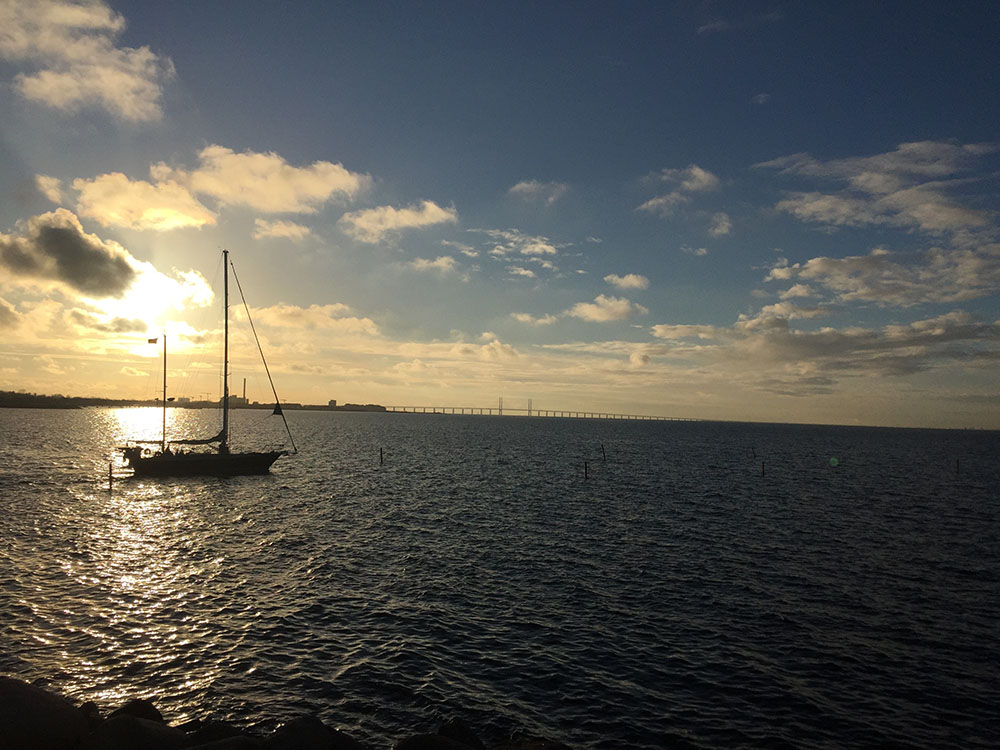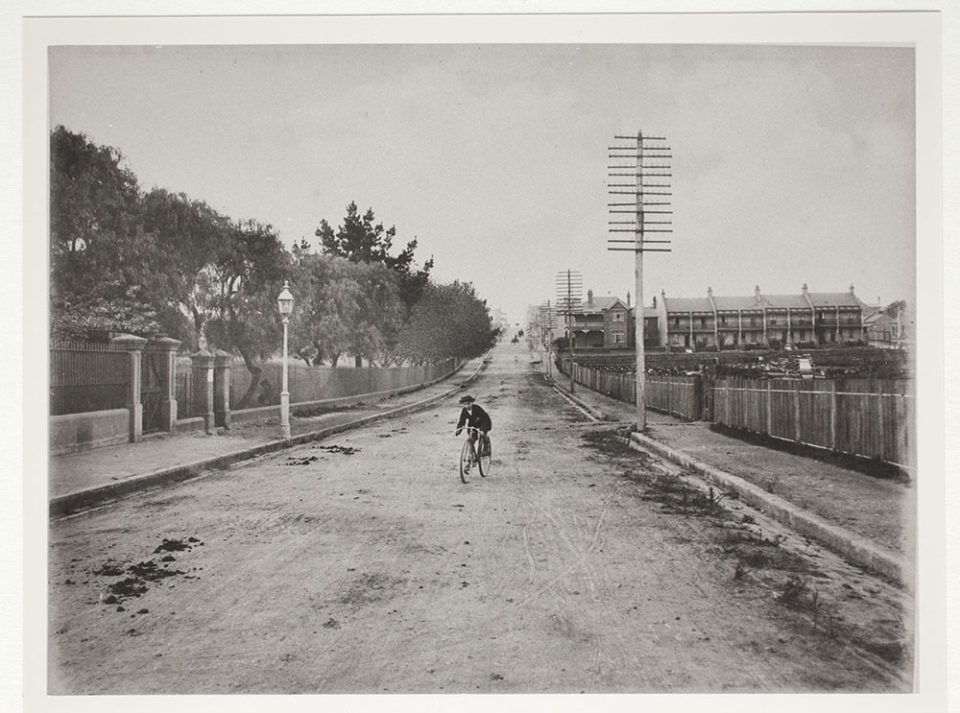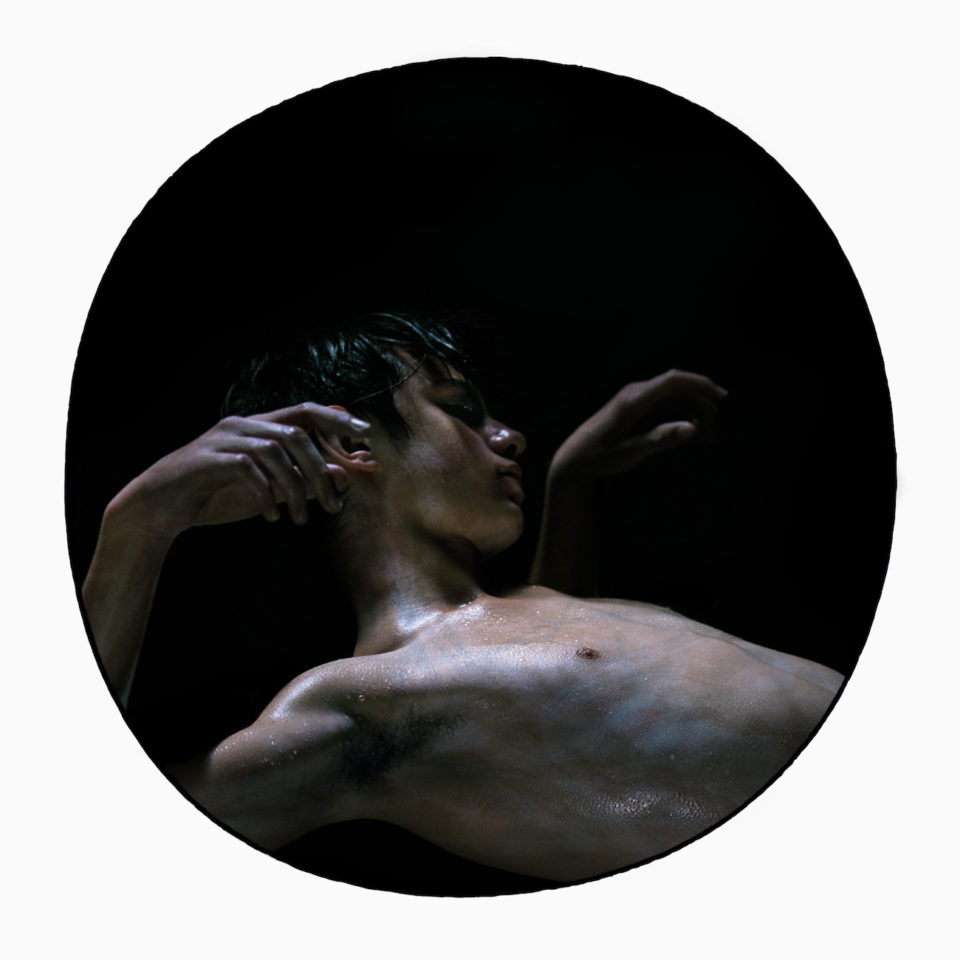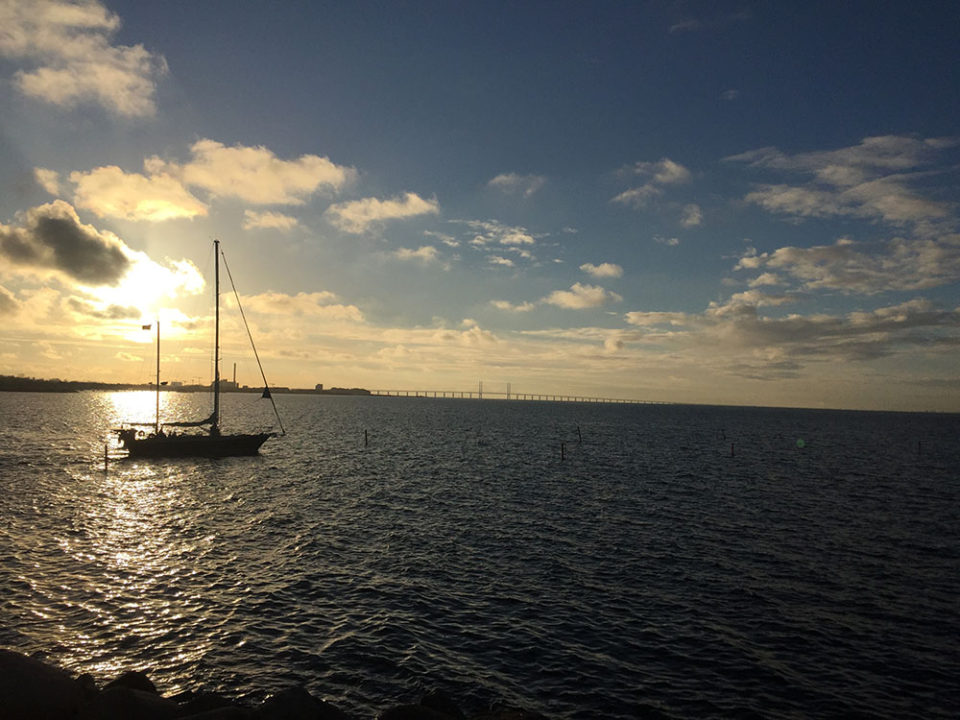There must be a global, unspoken agreement that controls the type of décor allowed inside a train. Once you step in, you could be anywhere – the predictable colour palette won’t give away any clues. The only things that might remind you of your actual location are the conversations you overhear, or maybe some fleeting glimpses of landscape, or even the way that sunlight reflects off the scuffed glass windows.
The seats in this train carriage are navy blue with an innocuous criss-cross pattern spattered on them, and the walls look as if they’ve fallen victim to a pencil-wielding toddler with a penchant for minimalism. It’s perfectly quiet in the carriage, the hypnotising rhythm of the tracks convincing all the passengers that silence should be the norm. Perfectly clean, too, but nowhere near clinical.
Rather, there’s an inescapable feeling of calm here. Perhaps it’s because we are all suspended over an ocean. Or perhaps it’s because of the mottled patches of afternoon light that slowly float around the carriage, saying goodbye before a 4pm sunset.
I’m making my way back to my family’s home in Malmö in Southern Sweden, after a quick day trip to Copenhagen in Denmark. Having only just overcome my wide-eyed disbelief about travelling between two entirely different countries in a shorter amount of time than it takes me to get, well, anywhere in Sydney, I feel myself blending quite comfortably into this Scandinavian scene.
Propped up by the Öresund Bridge, the train races across the fluid border between neighbouring countries. The bridge runs for eight kilometres coast to coast, connecting Malmö and Copenhagen with a 30-minute trip. It takes a gentle curve past the forests of wind turbines that erupt out of the water and the artificial islands that are strictly human-free. Through a universal territory that no one calls home.
Except for the few who live on the artificial island of Peberholm. Hundreds of species of plants and dozens of species of insects, birds and reptiles to be exact – some of who belong to nowhere else. Built in Danish water out of Swedish stone, Peberholm is a sanctuary for Nordic flora and fauna, the neighbouring governments deciding to create a space where nature could thrive by itself. Playfully named the ‘Pepper’ island because of its closeness to the organic Saltholm, this small patch of land houses the only permanent residents of the Öresund Strait, with everyone else just passing through.
Back inside the train, I’ve finally settled into my seat after peeling off the three jackets I’d worn to protect me from the Northern winter wind. The fading sunlight timidly peeks through the window, freckling my face and tempting me to feel warm.
Leaning heavily against the wall of the train, I watch Sweden get closer across the gold-tinged water. Just yesterday, I had sat and stared at this bridge and these trains for most of the afternoon, perched right on the coast of Malmö with my feet hanging over the edge of a stone wall. I was in one of the city’s newer suburbs, filled with spaceship-shaped glasshouses holding miniature tropical oases, and a huge, twisted apartment complex that is made up of multi-million dollar homes.
Beyond the wall where I sat were circular jetties, like wooden lily pads floating in the water. In the summer time, Swedes mass to this coast, throwing themselves off the edge of these piers and swimming in the same water that laps at the coast of Denmark.
Looking at the bridge from one country is a vastly different experience to travelling on it through a space that occupies neither. From land, the Öresund Bridge looks like any other, launching out from Sweden’s coast, then plummeting into a tunnel before it reaches Denmark. It’s a bridge that people are using constantly – some even commuting daily to a different country, or splitting their families across the strait. This bridge is a concrete part of daily routine.
There is one difference you notice when travelling across this bridge, though, which isn’t concealed by the usual patterns on the seats. While most other trains have to slice their way through land, this train does not. It does not speed past someone’s house, or school, or office, or any heavily branded Scandinavian clothing stores. All this train travels past are the bridge it clings to, the island that no one occupies, and the water that no one can truly own. We are all traveling to another country, but for the 30 minutes of the trip, we are all nowhere.
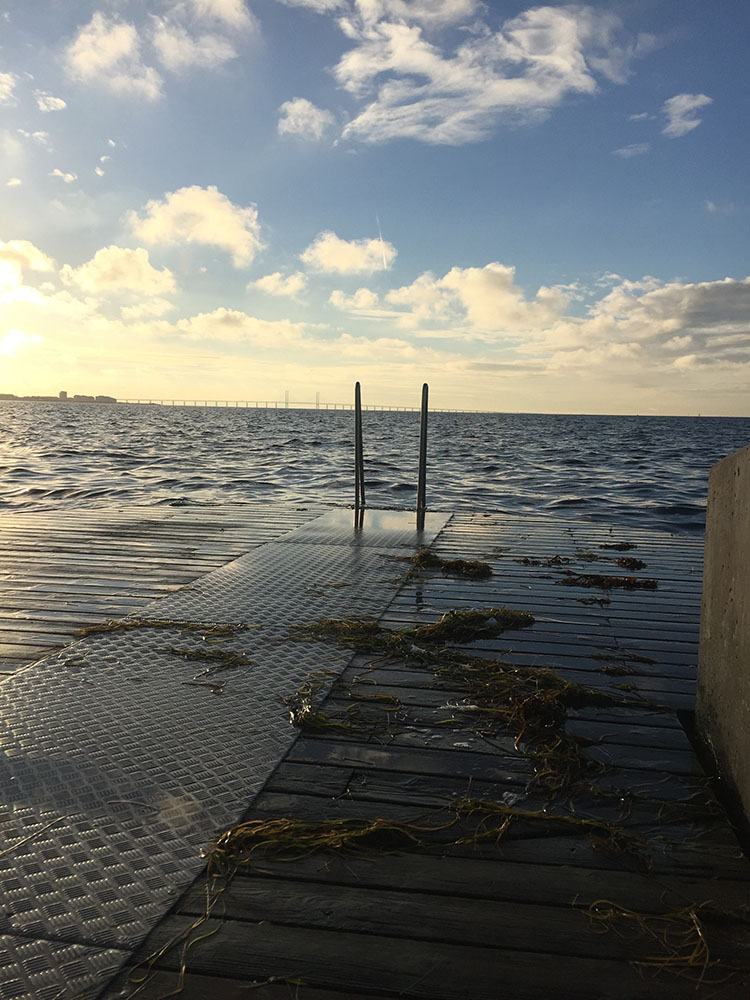
Photography by Corinne Parkes
Sitting behind me in the train carriage is a small family – a mother and two children. The older child is sitting slumped in the aisle seat next to his mum, bulky white headphones covering his ears and his face peering into the animated screen of an iPad that he holds with both hands. The younger sibling sits opposite, one elbow propped on the window ledge, her cheek resting in her palm and her feet tucked underneath her. Staring distantly out of the window, she seems transfixed by the repetitive diagonal shadows that are cast over her face as the train speeds past the steel support cables that hold this bridge over the water.
Across the aisle and a few seats ahead of me sits a man, facing backwards while the train moves forward. There’s a Swedish newspaper propped on his crossed knee, while a Danish one lies on the seat next to him. He’s dressed in a suit, a woollen scarf still draped over his shoulders. His heavy overcoat is hung on a hook that’s hidden in the window recess, a worn leather briefcase on the opposite facing seat. This man was already on the train when I hopped on at Copenhagen’s central station. I wonder whether he’s going home after work, or travelling across the strait to meet a friend.
Regardless, he looks as if he’s made this trip countless times before. For him, this train carriage (or at least the four seats he’s occupying) have become a temporary living room, a place where he can read or work or talk or sleep. A place where he’s neither home or at work, in Sweden or in Denmark. A place of complete transience.
I realise that this very public carriage has been hybridised, adopting a different meaning for each of us as we share this space together. What is universal, though, is that the warm air, the silence and those navy seats form the semblance of a home, only this home has hydraulic doors and speeds at 180km over the water.
A perfectly pleasant voice over the intercom announces that we are pulling into Hyllie. The station is built next to a sculpture of reflective bronzed glass panels, tactfully hiding Malmö’s biggest new shopping mall. The family near me reanimate themselves. The little girl begrudgingly exits her daydream as her mother feeds her limbs through the arms of an apple green coat, the boy juggling his iPad between hands as he does the same, still keeping his eyes glued to the screen. The doors slide open, and as the family leave, and a reminder of the outside cold takes their place.
Next is Triangeln station, and after that Centralen – my final stop. When I know that the train is only a few minutes away, I clumsily pull myself from my navy seat. Jackets on, bag zipped, I shuffle to the doors, only to have to linger there as the train drags itself into the station. Just as the it stops, I see the man who sat opposite me throw his overcoat easily around his shoulders, tuck his newspapers into his bag and walk through the opening doors, all in perfectly practiced time.
Moving out of the carriage, I find myself very firmly back in Malmö. As I walk up the stairs that lift me back into town, I hear the doors of the carriages hiss as they close, and the train ease out of the station. It’s 4.30pm now, the sun has well and truly set and home time rituals have begun. I step out on to the street, and straight into peak hour.


